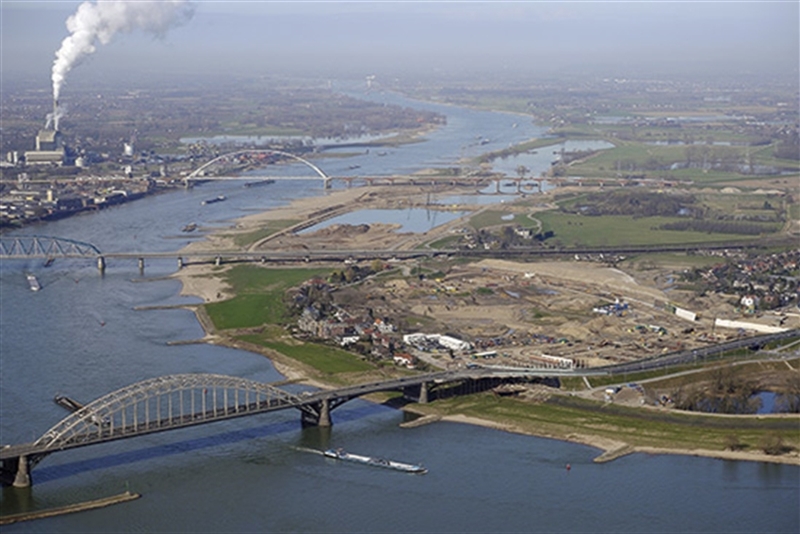Waalfront project Nijmegen
The Waalfront project is a major development for the city of Nijmegen. It involves the conversion of an industrial estate into a residential area, situated at a beautiful location on the river Waal. This enhances the quality of the city: who wouldn’t like a house with a view of the green river scenery? At this riparian location, climate-proofing and flood risk management are vitally important to the habitability of the residential area. However, any plan must also be feasible and affordable, especially in this uncertain market.
Results
- The Waalfront project offers excellent opportunities for incorporating sustainable measures to create peak water storage, without entailing substantial additional expenses. The focus is on measures that require little surface area and have a green-blue appeal. The following measures qualify for realisation in combination with water storage in the nearby Westerpark:
- In terms of maintenance and management, wadis are an economical solution. One factor, however, is that a high-quality finish might entail additional expense, in the event of a dual function, e.g., a wadi featuring playground equipment.
- Green parking on water storage crates would be a more expensive solution (in terms of construction, maintenance and management), but is highly commendable in view of the density and added value of crates in the planning area.
- Another imperative is the realisation of green and blue rooftops across the entire planning area: relatively economical, sustainable in terms of water storage, and providing a great deal of added value as regards the perception of the Waalfront area.
- With respect to maintenance and management costs, the green measures do not differ much from regular forms of peak water storage.
- A climate dyke as a flood risk management solution is relatively cost-efficient and enhances the perception of the Waal river: it affords more people a view of the water and also provides a better perspective of the Waal from the street at ground level. The expense is comparable to that involved in raising the dyke as scheduled (excluding earth moving expenses; these are estimated at approx. 2 million euros, based on two to three cubic metres over a surface area of 140,000 m2 in the Waalfront area, a marginal sum in comparison with the other expenses). Combinations of various dyke models would also provide attractive solutions: for example, part climate dyke, part raised main levee.

Contact person
Hiltrud Pötz
Atelier GROENBLAUW
+31(0)6 41133776
hiltrudpotz@ateliergroenblauw.nl
Results appeared on
Project type
Study
Participant
Municipality of Nijmegen
Scale
District / neighborhood
Theme
Drought, Heat, Urban flooding, Waterlogging
Type of project
Research
Phase
Completed
